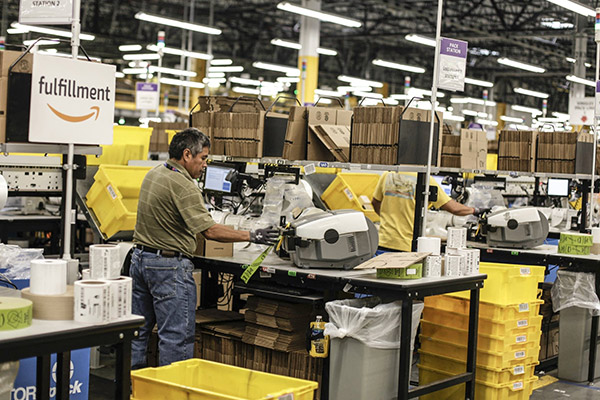COVID-19: Cutting down on your marketing budgets can be lethal
Prof Sourav Borah, IIM Ahmedabad, argues that companies need to prioritise marketing in the present COVID-19 crisis situation, since they will encounter marketing mix as well as customer engagement challenges. He advises companies to try and create new habits and build resilience into the supply chain.

The COVID-19 pandemic and the resulting lockdown has led to a stoppage in business for most product categories. However, some firms also have reasons to smile. Firms associated with categories such as healthcare, technology as well as those associated with food products have seen increase in demand. While the government is progressively opening up more sectors and monitoring the situation, companies are understandably concerned about the trajectory of both the pandemic and its impact on market sentiment in the coming months.
If one wants to attempt an answer to this key question about how markets will evolve, China can serve as a test case. China has gone through the complete cycle from lockdown to opening up most sectors. A recent survey by McKinsey looked at 12 different countries (and China was one of them), and it has revealed interesting insights. Consumer behaviour patterns shown by China are actually different from all other countries. Unlike all other countries, the Chinese want to make a lot of discretionary expenditure. Similarly, while most countries globally expect to spend less time working and more time on leisure and entertainment, Chinese consumers show completely opposite trend. This shows that consumer behaviour has become normal very fast in China. Understanding and adapting proactively to behavioural changes during the pandemic will be critical for success.
Don’t Rely on the Virus: Try to Develop Habits Among Consumers
Some small changes will definitely happen. One change I can envision is pertaining to media consumption habits. Similarly, consumption habits in general are going to change. People may not travel globally that often. So, travel and tourism industry is going to go through a tough time in near future. Consumers may also continue to be extremely concerned about safety and hygiene of products for a considerably long time.

Financial security is also an important factor, as because of lockdowns many people may lose their jobs. But if we look at China, in just a month’s time after opening up, people do not think financial insecurity is that big an issue. Thus, at least some sectors will see a V-shaped recovery. As demand grows, you will also see a lot of opportunities open up. India is in a good position to attract companies looking to diversify from China. If we can get those companies to migrate to India, it will give a lot of boost to the economy. Thus, the pandemic is not very bad for a country like India. It will hurt in the short run, and more so for poor people, it may make India more resilient and also provide lot more business opportunities. When consumers start making money again, they will again come back to where they were earlier.
It is important for companies to look towards developing some kind of habits around their brands. For instance, in the Hindu religion, it is a habit for many to go to the temple in the morning or in the evening. If someone does not go to a temple, they may do some puja within their household. This habit is prevalent across the country. Habits are critical. Rather than looking at how customer behaviour is going to change, companies should try to develop habits around product and service? If that can be done, it will be an enduring behaviour.
Cost and Pricing Challenges
From organization side, cost pressures may emerge due to the disruptions in supply, manufacturing constraints (due to social distancing norms), etc. This may lead to increase in prices as companies may try to pass on the increase in cost. But in my experience, customers do not have problems with price rise per se. They have problems with arbitrary price rise. If you are convincing enough with genuine reasons, most consumers understand and are reasonable. For example, food delivery services companies may ask consumers if they can give some tip to the rider, as these are troubled times. Do you think consumers will say no?
Consumers do understand when a company explains the reason for price increase. However, companies must also understand that as prices rises, expectation of quality also goes up. Companies must make sure that meet those expectations. Linked to this aspect is the high expectation on hygiene. One way to ensure the same is through certifications. For instance, a company could say that we only operate in green zones alone (no-COVID zone). Therefore, their products come from low/no COVID operations.
Companies may also practice and communicate the fact that all the people working in their supply chain go through 14-day mandatory quarantine. It would be great if a company can get third party certification, else they should self-certify. The outlook towards the consumers has to change and be more holistic – from health hazards perspective, quality, comparison, etc. Be the best at everything and if that is not possible, at least be honest and transparent.
Avoid Mixed Messaging
The lockdown has seen high growth in TV (30-38%) and digital media consumption (20-25%). So how do you allocate your marketing budget? A direct inference will be to increase spending on TV and digital in a big way. Digital also gives you a better chance at precision and is relatively more economical as a medium. However, you should also know whether your target segment is switching.

As far as communication is concerned, you can do some things that can help in the COVID-19 crisis. For instance, Mahindra has started making ventilators and Tata Group donated a lot of money. Thus, a communication highlighting your corporate social responsibility initiatives may create a positive brand attitude. Even if you are dealing in non-essential categories and you are not able to sell the products now, such communication will help you in developing positive word of mouth.
Moreover, during my conversation with consumers, I have realized that consistency of the message across channels is going to become really critical. If your salesperson is giving some information over a call to the customer, your website should provide exactly the same information. Consumers have started comparing a lot. Now consumers have time and are staying at home. Thus, consumers are going to compare across channels.
The pandemic and social distancing measures are going to stay for some time. So all the different brands which are dealing in non-essential commodities have to reach customers through other channels such as digital communication. But this has limitations. Even if you communicate digitally, customers want a touch and feel of the product. One way to achieve the same digitally is through virtual showrooms, use of catboats which can help in building digital engagement.
Supply Chain – Keep a Clear Vision
There are two challenges for companies that are facing demand. The first is how do they manage the production? The second worry is about any employee contracting the infection. This may completely stop the supply chain. Social distancing will become a norm. Companies that are technologically advanced in supply chain management are going to do well. All companies must build agility in the supply chain. For example, a company may work in shifts, rely only on employees from green zones, so that likelihood of infection is low. Such innovative solutions may need to be adopted which will determine how quickly you can ramp up the production.

This brings up a very interesting point – how much visibility of your supply chain do you have? Contrary to what people think, many companies do not know what’s going on in their supply chain. Imagine a company with its headquarter in US and its production is taking place in India, Bangladesh or China; they may not know who’s working in the supply chain. You have Tier 1 suppliers, Tier 2 suppliers, and so on. So how do you ensure that all your suppliers are following social distancing norms, staying safe and working efficiently?
You need to have supply chain champions. These are the Tier 1/2 suppliers, who are vigilant and follow the desired practices. So you need to develop relationship with your suppliers and their suppliers in turn. Supply chains post Covid cannot be just transactional; it should be relationship oriented. A decentralised supply chain is the only way a firm can monitor downstream suppliers.
Supply chains also to be more resilient. One reason for the problems that companies are facing is that they started putting all eggs in the same basket. For instance, almost all global electronics companies started exclusively sourcing from China. Of course they have cheap labour and also a lot of incentives, but these companies did not focus on the issue of resilience.
The lesson for Indian companies is that they have to be ready for contingencies. Assume that a company’s entire value chain is in the green zone. However, this picture may change quickly. What if one of the suppliers comes to in a red zone suddenly? Thus, a company must be prepared with alternate suppliers in multiple strategically located geographies. Companies must look for the next best alternative supply chains that can be leveraged as soon as there is some change in the present operations. In pandemic terminology, this is called staying ahead of the curve and have alternatives in place.
E-Commerce
Before the pandemic e-commerce penetration was increasing, but still a lot of people were not very comfortable purchasing from e-commerce due to concerns like return policy, touch and feel and safety. These kind of concerns still play out in small towns. It is up to the e-commerce to establish a supply chain where customers feel comfortable to buy. E-commerce also needs to be decentralised. If you are strong in some geography, you can make that a mini hub. Today orders go to a centralised warehouse and from there to small hubs for distribution. However, post-COVID, firm must look for local partners who may perform the delivery function for you. Local suppliers and a decentralized supply chain is the only solution; I foresee in a post-COVID world.
In all these ‘dos’, I would like to end with a significant ‘don’t’. Companies may contemplate bringing down their marketing budget or reducing the size of their marketing team during this period. I think reducing marketing budget is lethal. Companies need more people in marketing at this moment because there are high levels of uncertainty. What works today may not work tomorrow. Companies thus need a larger and more competent marketing team than normal times to come up with innovative solutions. If a company have to choose between R&D and marketing as the major discretionary heads, I would say you must invest more money in marketing as you are likely to encounter challenges related to marketing mix as well as challenges to keep customers engaged. Again, as and when governments relax lockdown, your marketing team is going to provide market intelligence to cope up with the “new normal”.
Sourav Bikash Borah is Assistant Professor of Marketing at Indian Institute of Management (IIM), Ahmedabad, India. He earned his PhD in Marketing from IIM, Bangalore. His research interests include service management strategy, supplier-relationships, and business strategies in emerging markets. He has published papers in multiple top-tier academic journals such as Journal of International Business Studies, Journal of the Academy of Marketing Science, Journal of International Marketing and Journal of Business Research. Prior to joining PhD, he worked in automobile as well as banking and financial sector.













Leave a comment